Estimated reading time: 11 minutes
Fleas on your indoor cat can feel like a mystery invasion. Even the cleanest homes aren’t immune to these pesky intruders. Our guide will unveil how those fleas found their furry way in and offer steps to evict them for good.
Key Takeaways
- Indoor cats can catch fleas from other pets, humans carrying fleas, rodents in the home, shared items, and traveling to new places.
- To stop fleas on indoor cats, use monthly preventive treatments and keep your home vacuumed and clean.
- Checking your cat with a flea comb helps find fleas early. If you do find fleas, treat your cat and home right away to avoid more issues.
- Treat all pets in the house for fleas regularly to protect your indoor cat from picking them up.
- Limiting your indoor cat’s contact with outdoor environments reduces their risk of getting fleas.
The Life Cycle of Fleas and How They Get on Indoor Cats
Fleas go through a life cycle of eggs, larvae, pupae, and adult fleas, with the ability to hitchhike onto indoor cats using various methods. Understanding this life cycle is crucial in preventing and dealing with flea infestations in your home.
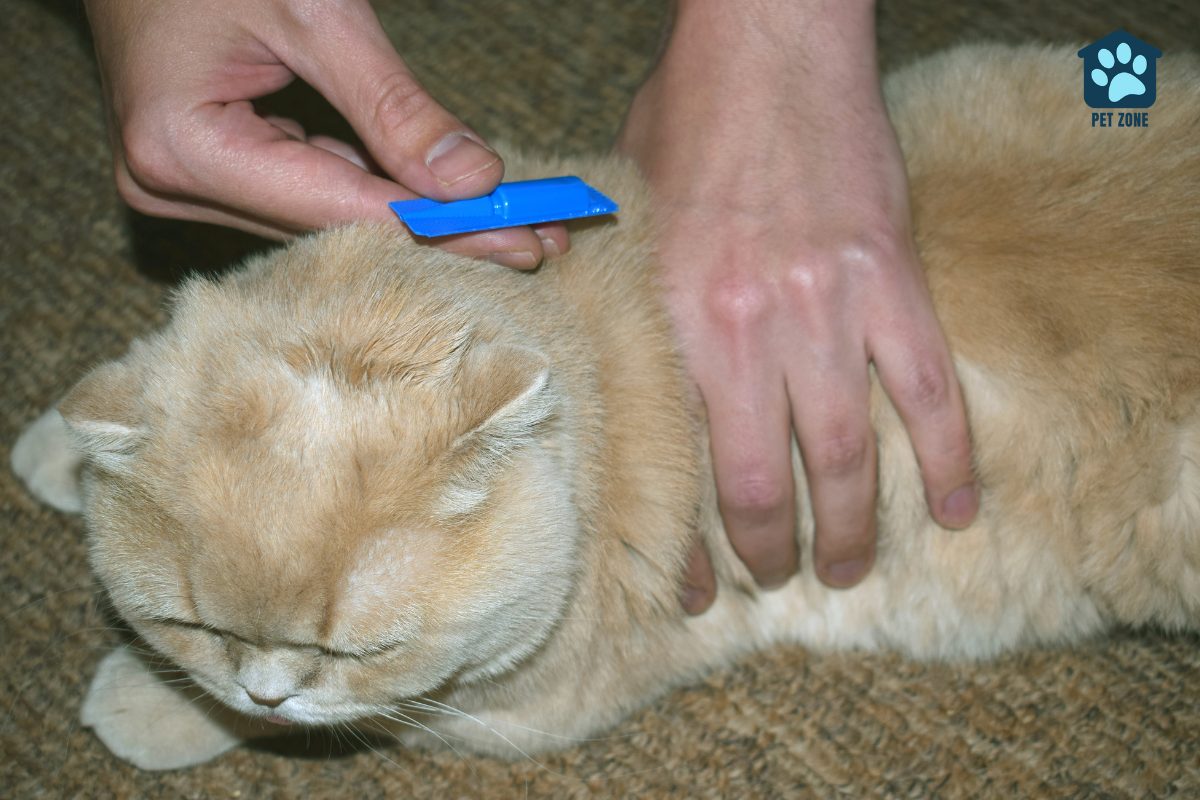
Flea eggs, larvae, pupae, and adult fleas
Fleas are tiny but powerful. They can infest your home and jump onto your indoor cat, starting their life cycle.
- Flea eggs are laid by adult fleas on your cat. The eggs can drop off around the house – in the carpet, bedding, or any crack they find. Within 1 to 12 days, these eggs hatch into larvae.
- Larvae emerge from flea eggs, wriggling away from light to find dirt and debris to eat. They’re blind and avoid sunlight, hiding in dark places like under furniture or deep in carpets.
- Pupae wrap themselves in cocoons where they wait for the right moment to hatch. This sticky silk-like case protects them as they develop into adult fleas. Inside this cocoon, they’re hard to kill and can stay dormant for weeks or months.
- Adult fleas spring into action once they sense a host nearby – warmth, vibration, and carbon dioxide alert them. Once they hitch a ride on your cat, they start feeding within seconds.
- These pests can live on your pet, sucking blood and laying more eggs that restart the cycle.
How fleas hitchhike onto cats
Cats love to lounge by windows and doors, basking in the sun. This cozy spot can be a flea’s ticket inside as these tiny pests jump from outdoor animals right onto your cat.
Imagine your dog romping outside, picking up fleas, then playing with your indoor cat—those hitchhiker fleas easily hop over.
Even you might carry them on clothes or shoes, unknowingly bringing these uninvited guests into your home. Fleas are sneaky travelers; they latch onto anything warm that passes by.
Your feline friend could also face flea risks when rodents venture indoors. Mice and rats can be little flea taxis delivering pests right to where cats nap and play.
Sharing brushes or bedding with other pets might also transfer fleas to your cat.
If you visit friends with pets or stay at hotels, be cautious—you could inadvertently pick up fleas and give them a free ride home to snuggle with your unsuspecting indoor kitty.
Ways Indoor Cats Can Get Fleas
From other pets in the home
Dogs and cats often share homes, but they can also share pests. Your dog might go outside, pick up fleas, and bring them indoors to your cat. Even if a pet plays in the backyard or goes on walks, it can catch fleas there.
Cats snuggle with each other too. This can let fleas jump from one furry friend to another. If you’re getting a new pet, make sure it’s flea-free before coming inside. That way, your indoor cat stays protected against these tiny invaders.
From humans who have been in contact with fleas
Humans who have been in contact with fleas can unwittingly bring these pesky parasites into the house. A simple walk through an infested field or yard can result in carrying flea eggs, larvae, or even adult fleas on clothing and shoes.
Once inside, these fleas may find their way onto your indoor cat, posing a risk of infestation.
It’s important to stay vigilant and take preventive measures, such as regularly checking for signs of fleas and taking care when moving into a new home where previous pets may have brought in fleas.
From rodents in the home
Rodents like mice, rats, and squirrels can carry fleas into your home. Fleas often infest the nests of these rodents in the attic, walls, basement, or crawlspace.
Once inside, these fleas can jump onto your indoor cat and start a new infestation – making it crucial to tackle rodent issues promptly to prevent flea problems for your furry friend.
From sharing supplies and household items
Sharing supplies and household items can lead to indoor cats getting fleas. These annoying parasites can be passed on through shared items, putting your cat at risk. Fleas hitchhike onto these items and can easily transfer to your cat, even if they are primarily indoors.
It’s important to be mindful of this risk and take measures to prevent fleas from spreading via shared objects within the home.
Regular grooming and checking for fleas, along with using flea prevention products, are crucial steps in protecting your indoor cat from potential infestations brought about by sharing items with other pets or humans who may have been in contact with fleas.
From traveling to new places
When traveling to new places, whether it’s a friend’s house or a new apartment, it’s important to be aware that your indoor cat may encounter fleas in these unfamiliar environments.
Fleas can easily hitchhike on shoes and clothing, unknowingly brought into the home and potentially exposing your indoor cat to these pesky pests.
Even routine trips to the vet can increase the risk of bringing fleas inside since other pets visiting may inadvertently carry fleas with them.
Fleas are resilient parasites that can lurk in various locations, including carpets, furniture, and bedding. Hence, being mindful of where you take your indoor cat and being proactive about preventing flea infestations is crucial for their well-being.

What to Do If Your Indoor Cat Has Fleas
If you notice signs of a flea infestation on your indoor cat, such as excessive scratching or visible fleas, it’s essential to take immediate action.
Start by spot-treating your cat with veterinarian-approved flea treatment and consult with your vet for advice on treating your home to prevent reinfestation.
Spotting and treating fleas on your cat
Check your indoor cat for signs of fleas like excessive scratching, red patches, or tiny dark specks in their fur. Use a specialized flea comb to catch and remove these pests from your cat’s coat.
If you find evidence of fleas, it’s crucial to act swiftly and consult a veterinarian for the right treatment options. There are various effective shampoos, spot-on treatments, oral tablets, and liquids designed to address active flea infestations on your feline friend.
Remember that catching fleas early can prevent further discomfort for your pet and help protect them from future infestations. Regular deep cleaning of your home is also essential to eliminate any lingering hitchhiker fleas.
Treating your home and preventing reinfestation
To prevent re-infestation, take these steps:
- Vacuum your home regularly, focusing on areas where your cat spends time and upholstery.
- Wash your cat’s bedding, along with any other fabric items they frequently use, in hot water to kill flea eggs and larvae.
- Use flea sprays or powders specifically designed for your home to treat carpets, furniture, and pet resting areas.
- Keep outdoor areas where your cat roams well-maintained, mowed, and free of debris to discourage flea habitats.
- Consider professional pest control services if the infestation is severe and persistent.
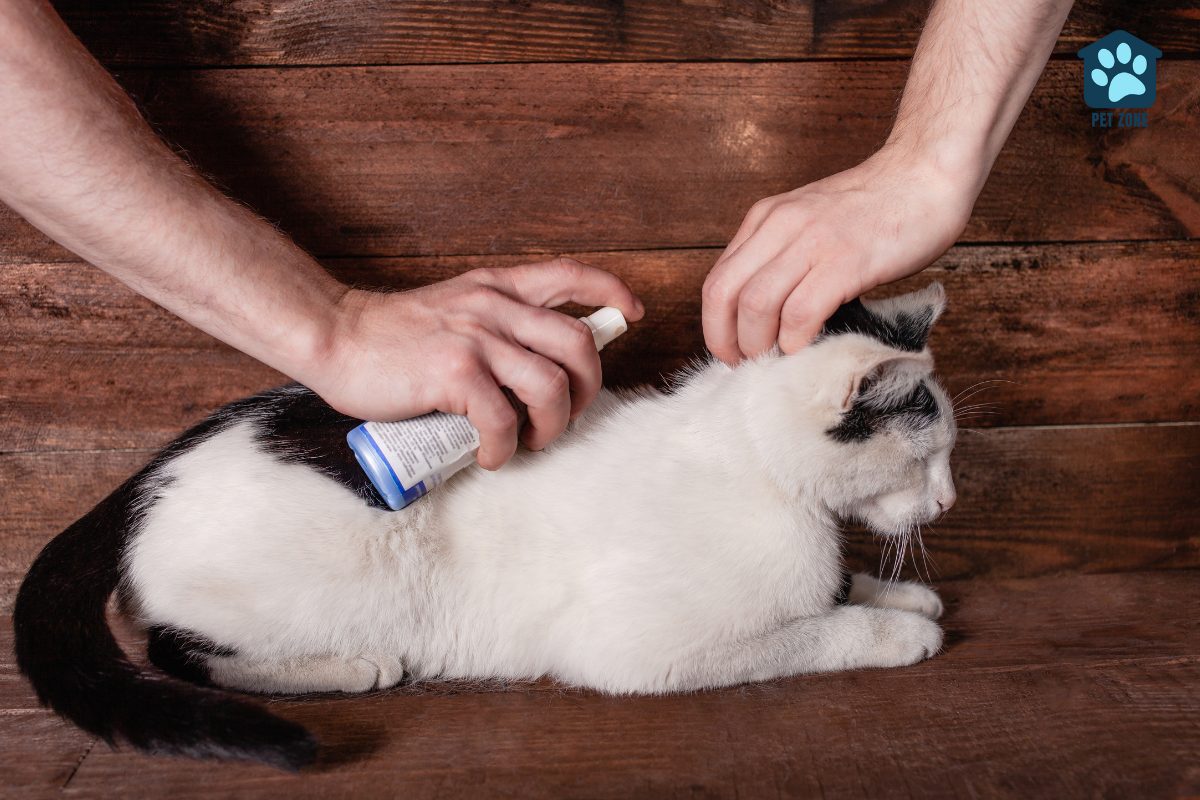
How to Prevent Fleas and Ticks on Indoor Cats
To prevent fleas and ticks on indoor cats, it’s important to regularly groom and check your cat for any signs of infestation. Using flea prevention products, keeping your home clean, treating other pets in the household, and limiting exposure to outdoor environments can also help keep your indoor cat free from fleas and ticks.
Regular grooming and checking for fleas
Check your cat’s fur regularly for fleas, using a flea comb to find any signs of these pesky parasites. While grooming your indoor cat, keep an eye out for small black specks known as flea dirt, which are indicators of a potential flea infestation.
By maintaining a regular grooming routine and diligently checking for fleas, you can take proactive steps to protect your indoor feline friend from these unwelcome intruders.
Using flea prevention products
To prevent fleas on indoor cats, use monthly flea preventive treatments. This approach is the best way to keep fleas away. It’s essential to ensure that the preventive treatment used kills both adult fleas and prevents eggs from hatching.
Regular application of flea prevention products will help safeguard your indoor cat from infestations and potential health issues associated with flea bites.
Make sure to choose a preventive approach that works best in keeping fleas away from your indoor cat.
Also, remember that it’s important to avoid toxic substances harmful to cats when using flea prevention products such as permethrins found in some flea shampoos.
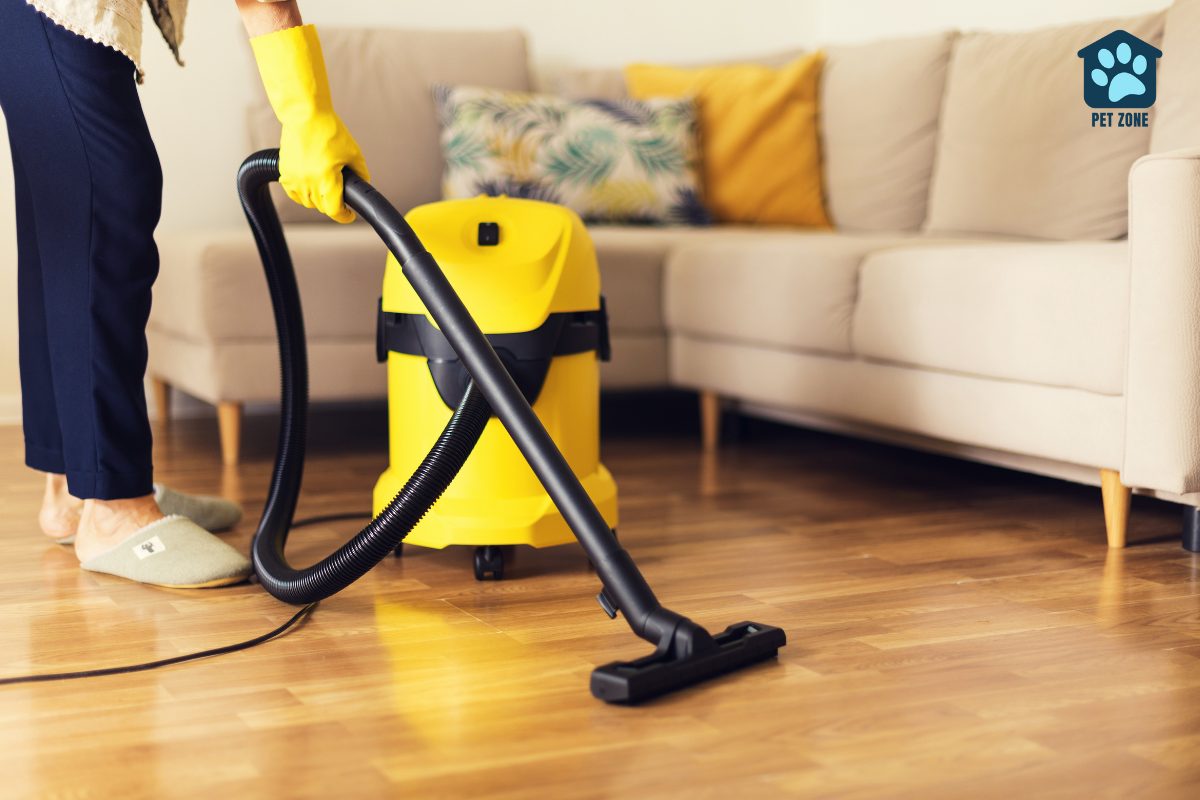
Keeping your home clean and vacuumed
Regular vacuuming of carpets, upholstery, and bedding helps prevent infestations of fleas and ticks in your home. It disrupts the flea life cycle and keeps them at bay with a 96% success rate.
Frequent vacuuming effectively kills fleas at all life stages which is essential for maintaining a healthy environment for your indoor cat free from pesky parasites.
To maintain a flea-free household, make sure to include regular vacuuming as part of your cleaning routine. This practice not only ensures your pet’s well-being but also creates a comfortable living space for you and your family by keeping pests at bay.
Treating other pets in the home
Regularly treating all pets in the home for fleas and ticks is crucial to safeguarding your indoor cats from infestations. Use monthly flea and tick prevention products on each pet to create a barrier against these parasites.
Consistently checking all pets for fleas and ticks helps prevent the spread of such pests to your indoor cats, ensuring a comfortable and healthy environment for all furry family members.
Limiting exposure to outdoor pets and environments
Exposing indoor cats to outdoor pets and environments increases the risk of flea infestations. Keep your cat away from potential flea carriers like stray animals or other pets with uncontrolled outdoor access.
Minimize contact between your indoor cat and unfamiliar animals encountered outdoors, reducing the likelihood of bringing fleas into your home.
Consider that uncontrolled outdoor access for cats not only poses a risk to their health but also leads to increased exposure to various parasites, including fleas.
By limiting contact with outdoor pets and environments, you can effectively reduce the chance of flea infestations in your home, contributing to better overall well-being for your indoor feline companion.
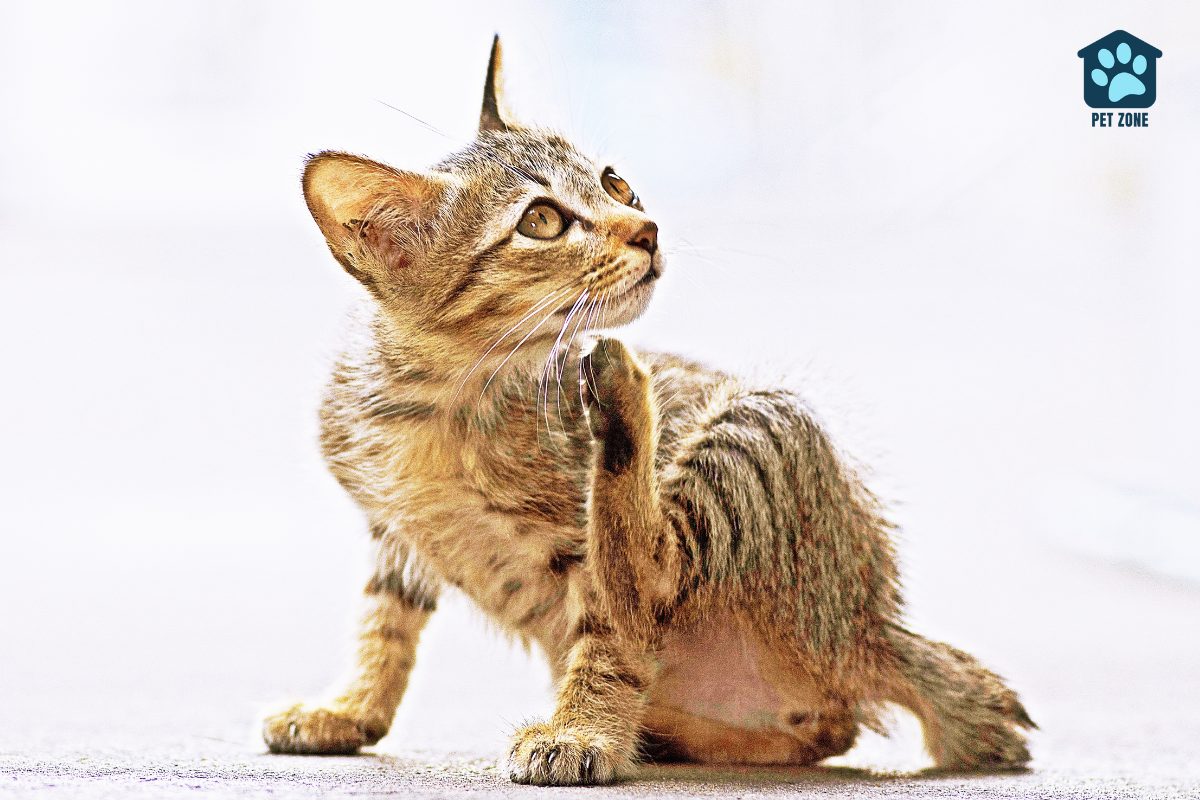
Conclusion
In summary, indoor cats can get fleas from various sources such as other pets in the home, human contact with infested areas, or even while traveling. Regular checks for fleas and consistent use of flea prevention products are crucial to keeping indoor cats protected.
It’s essential to be vigilant and proactive in preventing and treating flea infestations to ensure the well-being of our feline companions. By staying informed and taking necessary precautions, pet owners can effectively safeguard their indoor cats against the risk of fleas.
Keeping a clean environment and using appropriate preventive measures will help maintain a flea-free household for your beloved indoor cat.
Frequently Asked Questions
Even if your cat lives indoors, it can still get fleas. These pests may hitch a ride into your home on clothing or other pets and then jump onto your cat.
Fleas can enter the home in many ways—even if a dog goes out or you unknowingly bring fleas inside on your shoes, they can drop flea eggs that will hatch and find your cat.
If you don’t see fleas but suspect them, look for tiny black specks like pepper on your cat’s skin or bedding—that’s flea dirt! Also, watch for excessive scratching or biting at their skin.
Start by killing adult fleas with safe flea medicine recommended by a vet and regularly apply flea and tick preventatives to stop new ones from making themselves at home.
Yes, too many fleas can cause big problems like anemia from blood loss; checking for fleas and taking measures to kill them is best for your cat’s well-being.
Keep using regular flea prevention treatments even when you don’t see any bugs—it’s key! Plus, clean the house often since this helps remove eggs before they become more pesky little biters.
As an Amazon Associate I earn from qualifying purchases.
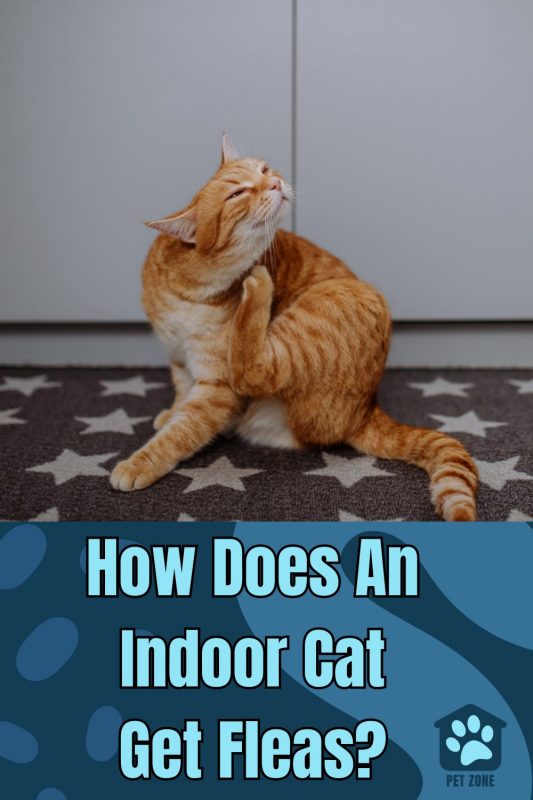




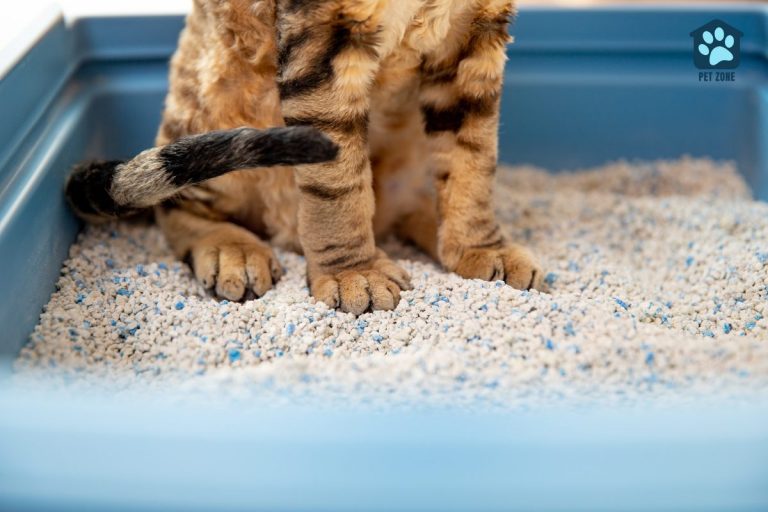



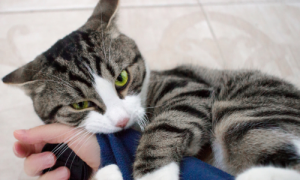
This has somehow happened to my cat even though she has been an indoor cat all her life. Your post has given me a greater understanding of why this may have happened and what to do about it. Thanks for the advice.
Thanks for the insightful guide! Fleas can be tricky, but your tips are practical and helpful. Protecting our indoor cats from these invaders is essential 🙂